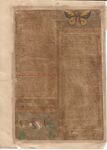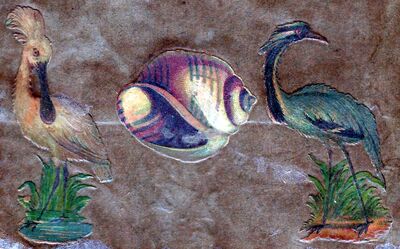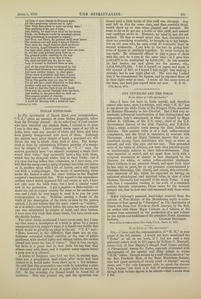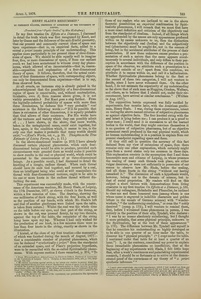HPB-SB-7-68: Difference between revisions
No edit summary |
mNo edit summary |
||
| (2 intermediate revisions by 2 users not shown) | |||
| Line 11: | Line 11: | ||
| item =1 | | item =1 | ||
| type = letter | | type = letter | ||
| status = | | status = proofread | ||
| continues = | | continues = | ||
| author = Sotheran, Charles | | author = Sotheran, Charles | ||
| title =Isis Unveiled | | title =Isis Unveiled and the Todas | ||
| subtitle = | | subtitle = | ||
| untitled = | | untitled = | ||
| source title = | | source title = London Spiritualist | ||
| source details = | | source details = No. 293, April 5, 1878, p. 161 | ||
| publication date = | | publication date = 1878-04-05 | ||
| original date =1878-03-18 | | original date =1878-03-18 | ||
| notes = | | notes = | ||
| Line 25: | Line 25: | ||
}} | }} | ||
... | <center>''To the Editor of ''“''The Spiritualist,”''</center> | ||
{{Style S-Small capitals|Sir}},—I have not been in India myself, and therefore cannot take issue, upon knowledge, with what “H. M.” has to say about the white Todas of the Nilageri Hills, described by Madame Blavatsky in ''Isis Unveiled. ''But I find very re markable inferential corroboration of that distinguished and respectable lady’s statements in what is related by Major Alfred R. Calhoun, of the U.S. army, chief of the U.S. Government Survey of the 35th Parallel, and F.R.G.S. (Eng.), about a similar caste among the Zuni Indians of Arizona. This ancient tribe is of a dark coffee-coloured complexion, and the blood is untainted by mixture with Europeans. And yet Major Calhoun reports that he encountered among them individuals who were as white as himself, and with blue eyes and fair hair. They presented none of the traits of Albinos, nor were they physiologically or intellectually inferior to their fellow-tribesmen. They were regarded as sacred, and set apart from birth with a religious veneration as sincere as that displayed by the Siamese for white, or rather coffee-coloured elephants, Major Calhoun is my personal friend, and apart from what he has said in print, he in my presence communicated to Madame Blavatsky, Col. Olcott, and others, this extraordinary discovery of his, which he regarded as having an enhanced ethnological and mystical value, in view of what Madame Blavatsky had reported of the white Todas. I may add, that I remember reading in the work of a sixteenth century Spanish missionary, whose name for the moment escapes me, that he had seen and conversed with these white Zunis. | |||
Major Calhoun’s personal knowledge received from the natives of New Mexico of the Montezuma myth is corroborative of that quoted by “Scrutator” in ''The Spiritualist ''of March 8th, from ''Foot Tracks in North America, ''by Dr. Bell, an author with whom Major Calhoun is, I believe, at thepresent time associated in the production of a new volume on the myths and traditions of the primitive North American Indians. | |||
{{Style P-Signature in capitals|Charles Sotheran.}} | |||
Press Club, 6, Centre-street, New York, U.S.A., March 18, 1878. | |||
{{HPB-SB-item | {{HPB-SB-item | ||
| Line 32: | Line 41: | ||
| item =2 | | item =2 | ||
| type = letter | | type = letter | ||
| status = | | status = proofread | ||
| continues = | | continues = | ||
| author = | | author =Blavatsky, H. P. | ||
| title = | | title = I have read the communication | ||
| subtitle = | | subtitle = | ||
| untitled =yes | | untitled =yes | ||
| source title = | | source title = London Spiritualist | ||
| source details = | | source details = No. 293, April 5, 1878, pp. 161-2 | ||
| publication date = | | publication date = 1878-04-05 | ||
| original date =1878-03-18 | | original date =1878-03-18 | ||
| notes = | | notes = | ||
| archivist notes = This is pub. in "A Modern Panarion," p. 113 as {{Style S-Lost|}}/ | |||
| categories = | | categories = | ||
}} | }} | ||
... | <center>''To the Editor of ''“''The Spiritualist”''</center> | ||
{{Style S-Small capitals|Sir}},—I have read the communication of “H. M.” in your paper of the 8th instant. I would not have mentioned the “Todas” at all in my book, if I had not read a very elaborate octavo work in 271 pages, by William S. Marshall, Lieut.-Col. of Her Majesty’s Bengal Staff Corps, entitled, ''A Phrenologist Among the Todas, ''copiously illustrated with photographs of the squalid and filthy beings to whom “H.M.” refers. Though written by a staff officer, assisted “by the Rev. Friedrich Metz, of the Basel Missionary Society, who had spent upwards of twenty years of labours” among them, and “the only European able to speak the obscure Toda tongue,” the book is so full of misrepresentations—though both writers appear to be sincere—that I wrote what I did. | |||
What I said I knew to be true, and I do not retract a single word. If neither “H. M.,” nor Lieut.-Col. Marshall, nor the Rev. Mr. Metz have penetrated the secret that lies behind the dirty huts of the aborigines they have seen, that is their misfortune, not my fault. | |||
{{Style P-Signature in capitals|H. P. Blavatsky}} | |||
New York, March 18th, 1878. | |||
{{HPB-SB-item | {{HPB-SB-item | ||
| Line 53: | Line 72: | ||
| item =3 | | item =3 | ||
| type = image | | type = image | ||
| file = | | file = SB-07-068-3.jpg | ||
| status = | | image size = 400px | ||
| status = ok | |||
| author = | | author = | ||
| title = | | title = | ||
| untitled = yes | | untitled = yes | ||
| notes = | | notes = | ||
| categories = | | categories = collage | ||
| hide = yes | | hide = yes | ||
}} | }} | ||
{{HPB-SB-item | {{HPB-SB-item | ||
| Line 68: | Line 89: | ||
| item =4 | | item =4 | ||
| type = image | | type = image | ||
| file = | | file = SB-07-068-4.jpg | ||
| status = | | image size = 200px | ||
| status = ok | |||
| author = | | author = | ||
| title = | | title = | ||
| untitled = yes | | untitled = yes | ||
| notes = | | notes = colored butterfly | ||
| categories = | | categories = | ||
| hide = yes | | hide = yes | ||
}} | }} | ||
{{HPB-SB-item | {{HPB-SB-item | ||
| volume =7 | | volume = 7 | ||
| page =68 | | page = 68 | ||
| item =5 | | item = 5 | ||
| type = | | type = article | ||
| | | status = proofread | ||
| | | continues = 69 | ||
| author = | | author = Sollner, Friderich | ||
| title = | | title = Henry Slade's Mediumship* | ||
| untitled = | | subtitle = By Friedrich Zollner Professor of Astronomy at the University of Leipzig | ||
| untitled = | |||
| source title = London Spiritualist | |||
| source details = No. 293, April 5, 1878, pp. 163-4 | |||
| publication date = 1878-04-05 | |||
| original date = | |||
| notes = | | notes = | ||
| categories = | | categories = | ||
}} | }} | ||
{{ | <center>(''Translated from “Psychic Studies” by Miss Kislingbury.'')</center> | ||
{{Style S-Small capitals|In}} my first treatise On ''Effects at a Distance, ''I discussed in detail the truth which was first recognised by Kant, and later by Gauss and the followers of the anti-Euclid geometry, that our present and commonly current ideas of space rest upon experience—that is, on empirical facts, added to a causal ''a priori ''innate principle of our understanding. This applies more particularly to our present ideas of ''three ''dimensions of space. We should be able equally well to imagine four, five, or more dimensions of space, if from our earliest youth we had been accustomed to witness every day phenomena, which allowed of an incontestable—that is, reasonable— exposition and explanation of a four-dimensional theory of space. It follows, therefore, that the actual existence of four dimensions of space, with corresponding objects, can only be demonstrated from experience—that is to say, from observed facts. | |||
At all events, an immense step is already gained in the acknowledgment that the possibility of a four-dimensional region of space is conceivable, and, without contradiction, thinkable, even if, from reasons above given, it is not visibly presentable. † But Kant goes a step further. From the logically-inferred probability of spaces with more than three dimensions, he deduces this “very probable” ''real'' existence in the following words'':— ''“If it be possible that there is extension of other dimensions, it is equally probable that God allows of their existence. For His works have all the vastness and variety which they can possibly admit of. . . . I have shown, in the above, that more worlds, taken in the metaphysical sense, ''could ''exist together, but here, again, is the condition which, it seems to me, is the only one that makes it probable that many worlds should exist.”—(''Kant’s Works, ''vol. v., p. 25. ''Thoughts on the True'' ''Estimate of Lining Forces,'' &c.,'' ''p. 11.) | |||
In the above-mentioned treatise (p. 273) I have already discussed certain physical phenomena, which such four-dimensional beings would be able to produce, provided such circumstances were granted them as would make it possible to show results in the real or physical world, which could be presented to the consciousness of us three-dimensional beings. As a possible result, I had discussed in detail the knotting of a simple, endless thread. When such thread should have its ends tied together, and secured by a seal, then an intelligent being who could at will manipulate the thread with four-dimensional motions, ought to be able to tie one or more knots in the endless thread without disturbing the seal. | |||
This experiment was successfully made, with the concurrence of the American medium, Mr. Henry Slade, at Leipzig, the 17th December, 1877, at eleven o’clock in the forenoon, within a few minutes of time. The drawing, showing the one millimetre of thick string, with the four knots, as well as the position of my hands, with which Mr. Slade’s left and that of another gentleman were linked upon the table, is taken from nature. ‡ Whilst the seal was the whole time on the table before our eyes, and that part of the string, as shown in the cut, was pressed firmly, by my two thumbs, against the top of the table, the remainder of the string hung loose upon my lap. Whereas I had only wished for the production of ''one ''knot, in a few minutes there were no less than four knots in the string, exactly as shown in the illustration. | |||
{{Style S-HPB SB. Continues on |7-69}} | |||
{{Footnotes start}} | |||
}} | <nowiki>*</nowiki> From ''Wissenchaftliche Abhandlungen, ''by Friedrich Zollner, Professor of Astronomy at the University of Leipzig. Vol. I. (Leipzig, L. Staaekmann, 1878), xiii., p. 733; large Svo. pp. 724—732. | ||
† We intend, in a future special article, to lay before our readers in greater detail this highly important theory of a four or more dimensional region of space, as to the possibility of which the dpriori deductions appear to be demonstrated as really existent by medial phenomena; thus, the full weight of the Zollner experiments may be estimated from personal observation and judgment. It will, then, also be made clearer what is meant by the “shades” of Plato.— {{Style S-Small capitals|Ed}}. ''Psy. Studies.'' | |||
‡ A diagram, showing the nature of the experiment, was published in ''The Spiritualist ''of Feb. 15th, 1878,— {{Style S-Small capitals|Ed}}. ''of S.'' | |||
{{Footnotes end}} | |||
{{HPB-SB- | {{HPB-SB-footer-footnotes}} | ||
}} | |||
... | {{HPB-SB-footer-sources}} | ||
<gallery widths=300px heights=300px> | |||
london_spiritualist_n.293_1878-04-05.pdf|page=7|London Spiritualist, No. 293, April 5, 1878, p. 161 | |||
london_spiritualist_n.293_1878-04-05.pdf|page=9|London Spiritualist, No. 293, April 5, 1878, pp. 163-4 | |||
</gallery> | |||
Latest revision as of 06:06, 7 March 2024

Legend
Isis Unveiled and the Todas
Sir,—I have not been in India myself, and therefore cannot take issue, upon knowledge, with what “H. M.” has to say about the white Todas of the Nilageri Hills, described by Madame Blavatsky in Isis Unveiled. But I find very re markable inferential corroboration of that distinguished and respectable lady’s statements in what is related by Major Alfred R. Calhoun, of the U.S. army, chief of the U.S. Government Survey of the 35th Parallel, and F.R.G.S. (Eng.), about a similar caste among the Zuni Indians of Arizona. This ancient tribe is of a dark coffee-coloured complexion, and the blood is untainted by mixture with Europeans. And yet Major Calhoun reports that he encountered among them individuals who were as white as himself, and with blue eyes and fair hair. They presented none of the traits of Albinos, nor were they physiologically or intellectually inferior to their fellow-tribesmen. They were regarded as sacred, and set apart from birth with a religious veneration as sincere as that displayed by the Siamese for white, or rather coffee-coloured elephants, Major Calhoun is my personal friend, and apart from what he has said in print, he in my presence communicated to Madame Blavatsky, Col. Olcott, and others, this extraordinary discovery of his, which he regarded as having an enhanced ethnological and mystical value, in view of what Madame Blavatsky had reported of the white Todas. I may add, that I remember reading in the work of a sixteenth century Spanish missionary, whose name for the moment escapes me, that he had seen and conversed with these white Zunis.
Major Calhoun’s personal knowledge received from the natives of New Mexico of the Montezuma myth is corroborative of that quoted by “Scrutator” in The Spiritualist of March 8th, from Foot Tracks in North America, by Dr. Bell, an author with whom Major Calhoun is, I believe, at thepresent time associated in the production of a new volume on the myths and traditions of the primitive North American Indians.
Press Club, 6, Centre-street, New York, U.S.A., March 18, 1878.
<Untitled> (I have read the communication)
Sir,—I have read the communication of “H. M.” in your paper of the 8th instant. I would not have mentioned the “Todas” at all in my book, if I had not read a very elaborate octavo work in 271 pages, by William S. Marshall, Lieut.-Col. of Her Majesty’s Bengal Staff Corps, entitled, A Phrenologist Among the Todas, copiously illustrated with photographs of the squalid and filthy beings to whom “H.M.” refers. Though written by a staff officer, assisted “by the Rev. Friedrich Metz, of the Basel Missionary Society, who had spent upwards of twenty years of labours” among them, and “the only European able to speak the obscure Toda tongue,” the book is so full of misrepresentations—though both writers appear to be sincere—that I wrote what I did.
What I said I knew to be true, and I do not retract a single word. If neither “H. M.,” nor Lieut.-Col. Marshall, nor the Rev. Mr. Metz have penetrated the secret that lies behind the dirty huts of the aborigines they have seen, that is their misfortune, not my fault.
New York, March 18th, 1878.


Henry Slade's Mediumship*
In my first treatise On Effects at a Distance, I discussed in detail the truth which was first recognised by Kant, and later by Gauss and the followers of the anti-Euclid geometry, that our present and commonly current ideas of space rest upon experience—that is, on empirical facts, added to a causal a priori innate principle of our understanding. This applies more particularly to our present ideas of three dimensions of space. We should be able equally well to imagine four, five, or more dimensions of space, if from our earliest youth we had been accustomed to witness every day phenomena, which allowed of an incontestable—that is, reasonable— exposition and explanation of a four-dimensional theory of space. It follows, therefore, that the actual existence of four dimensions of space, with corresponding objects, can only be demonstrated from experience—that is to say, from observed facts.
At all events, an immense step is already gained in the acknowledgment that the possibility of a four-dimensional region of space is conceivable, and, without contradiction, thinkable, even if, from reasons above given, it is not visibly presentable. † But Kant goes a step further. From the logically-inferred probability of spaces with more than three dimensions, he deduces this “very probable” real existence in the following words:— “If it be possible that there is extension of other dimensions, it is equally probable that God allows of their existence. For His works have all the vastness and variety which they can possibly admit of. . . . I have shown, in the above, that more worlds, taken in the metaphysical sense, could exist together, but here, again, is the condition which, it seems to me, is the only one that makes it probable that many worlds should exist.”—(Kant’s Works, vol. v., p. 25. Thoughts on the True Estimate of Lining Forces, &c., p. 11.)
In the above-mentioned treatise (p. 273) I have already discussed certain physical phenomena, which such four-dimensional beings would be able to produce, provided such circumstances were granted them as would make it possible to show results in the real or physical world, which could be presented to the consciousness of us three-dimensional beings. As a possible result, I had discussed in detail the knotting of a simple, endless thread. When such thread should have its ends tied together, and secured by a seal, then an intelligent being who could at will manipulate the thread with four-dimensional motions, ought to be able to tie one or more knots in the endless thread without disturbing the seal.
This experiment was successfully made, with the concurrence of the American medium, Mr. Henry Slade, at Leipzig, the 17th December, 1877, at eleven o’clock in the forenoon, within a few minutes of time. The drawing, showing the one millimetre of thick string, with the four knots, as well as the position of my hands, with which Mr. Slade’s left and that of another gentleman were linked upon the table, is taken from nature. ‡ Whilst the seal was the whole time on the table before our eyes, and that part of the string, as shown in the cut, was pressed firmly, by my two thumbs, against the top of the table, the remainder of the string hung loose upon my lap. Whereas I had only wished for the production of one knot, in a few minutes there were no less than four knots in the string, exactly as shown in the illustration.
<... continues on page 7-69 >
* From Wissenchaftliche Abhandlungen, by Friedrich Zollner, Professor of Astronomy at the University of Leipzig. Vol. I. (Leipzig, L. Staaekmann, 1878), xiii., p. 733; large Svo. pp. 724—732.
† We intend, in a future special article, to lay before our readers in greater detail this highly important theory of a four or more dimensional region of space, as to the possibility of which the dpriori deductions appear to be demonstrated as really existent by medial phenomena; thus, the full weight of the Zollner experiments may be estimated from personal observation and judgment. It will, then, also be made clearer what is meant by the “shades” of Plato.— Ed. Psy. Studies.
‡ A diagram, showing the nature of the experiment, was published in The Spiritualist of Feb. 15th, 1878,— Ed. of S.
Editor's notes
- ↑ Isis Unveiled and the Todas by Sotheran, Charles, London Spiritualist, No. 293, April 5, 1878, p. 161
- ↑ I have read the communication by Blavatsky, H. P., London Spiritualist, No. 293, April 5, 1878, pp. 161-2
This is pub. in "A Modern Panarion," p. 113 as .../. – Archivist - ↑ image by unknown author
- ↑ image by unknown author. colored butterfly
- ↑ Henry Slade's Mediumship* by Sollner, Friderich, London Spiritualist, No. 293, April 5, 1878, pp. 163-4
Sources
-
London Spiritualist, No. 293, April 5, 1878, p. 161
-
London Spiritualist, No. 293, April 5, 1878, pp. 163-4


